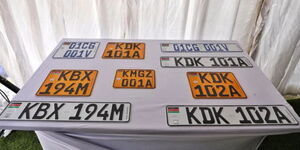Demand for used cars in Kenya has been on the rise following the low supply of brand new vehicles in the international market that has been caused by the shortage of microchips used in the manufacturing process.
With the increased demand, some car dealers engage in fraudulent schemes in order to convince unsuspecting buyers of second-hand cars that their units are of high quality and grade.
The dealers reverse the mileage with the aim of duping the buyers that the vehicle has not covered long distances from its date of manufacture. They intentionally alter the reading because the odometer offers important data that inform the buyer's perspective.
Tricks Used
Some dealers in the country roll back the digital odometer by removing the vehicle's circuit board. This makes the car looks somehow new to prospective buyers.
Some use rollback equipment that hooks right into the vehicle’s electronic circuit.
Digital odometers can be changed with professional-grade diagnostic tools and are more tricky to spot once altered.
With the government fixing some of the rules on importing vehicles to the country, knowing if the mileage has been altered is one important factors for any person buying a car.
Recently, the Kenya Bureau of Standards (KEBS) banned the importation of used mini-buses, double-decker, and large buses into the country.
Justifying the decision, KEBS noted controlling the importation of buses was geared towards promoting the uptake of locally assembled and fabricated ones in a move that will grow the local industry.
Here is how to know if the mileage has been reversed
Check mileage at the time of inspection
All vehicles imported into the country must undergo inspection by a KEBS appointed body such as Quality Inspection Service Japan (QISJ) or Japanese Export Vehicle Information Certificate (JEVIC). The vehicle's data is then entered into the system and can be verified from anywhere in the world.
Analyze the vehicle usage
It is important to consider the manufacturing year of the vehicle you are purchasing and then compare it with the current mileage. If for instance a car was manufactured in 2016 and its mileage is substantially less than 12,000 kilometers per year, this may be a cause for concern.
Consider the seller’s habits
A dealer's habit can determine if it is just a mere case of fraud. If the vehicle appears to be a business vehicle with decals or signs yet the mileage is abnormally low, it may have had its odometer tampered with.
Check the vehicle’s condition
It is important to compare the vehicle’s wear and tear with the reading on the odometer. Check if it is in line with the vehicle’s current condition including the wear on the steering wheel, gear level, and pedals.
A low-mileage car will likely still have its original tires and brakes.
Check the body of the vehicle
If there seems to be more paint fade or body damage than you would expect from the year and mileage on the car yet the odometer is low, think about the possibility that the odometer has been rolled back.
Check the paperwork
Getting a pre-purchase inspection from a vehicle dealer is important for any car buyer. The history report will not alert the buyer to the vehicle’s damage history, unfixed recall status, lien status, and more, it will provide a registration history which includes odometer readings.
This is essential as it helps a buyer to compare the numbers one sees on the odometer and gives logic to the prospective buyer.
Knowing how far a vehicle has travelled in its lifetime is a good indicator of how much life it has left. Plus, the value of a used car is heavily influenced by how much road it’s travelled.
Buying a used car with a rolled-back odometer likely means that one is paying more than the vehicle's value.












